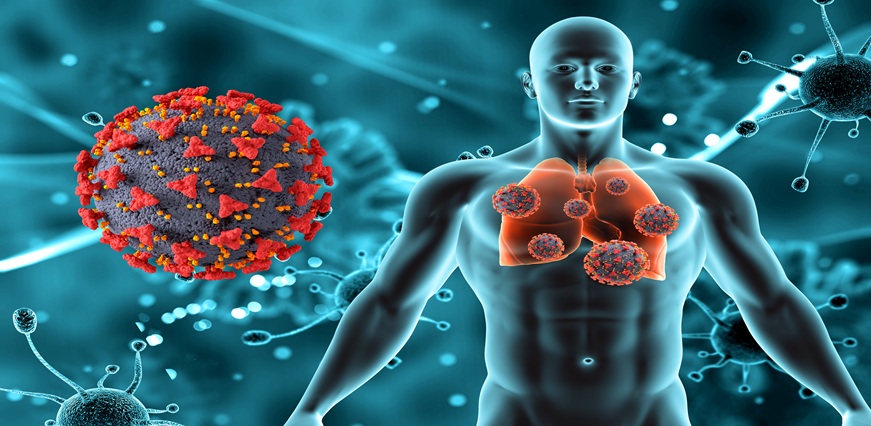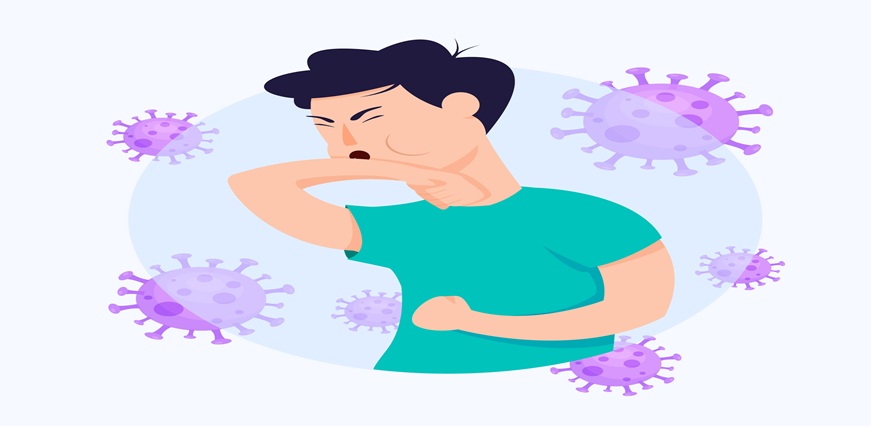Tuberculosis is a bacterial infection that is contagious in nature. Usually, it attacks the lungs of a person. However, it can spread to other body parts like the brain, kidney, and spine. This bacterial infection spreads from one person to the other through tiny droplets coming out of the mouth of a TB patient while sneezing and coughing. Tuberculosis infection has three stages: primary infection, latent TB infection, and active TB.
If a person becomes infected by TB, he may or may not show symptoms. In the case of no symptoms, the person has latent tuberculosis, also known as latent TB. In latent tuberculosis infections, TB is dormant in nature and stays inside the body. The person has bacteria in their body but it does not replicate, which leads to no symptoms. Another type of TB disease is active tuberculosis. In this type of tuberculosis, the person has visible symptoms and is contagious. The bacteria present in the body replicate and the person has detectable symptoms. Both cases of tuberculosis need treatment.
Many patients have latent TB for their lifetime without further progression to active TB. In some cases, the patient’s immune system becomes weak and unable to prevent bacterial growth and latent TB infection becomes active TB. Other than this, you may hear about other types of TB like pulmonary tuberculosis, which affects the lungs; extra pulmonary tuberculosis, which is TB outside the lungs; and systemic miliary tuberculosis, which can spread throughout the body. Usually, TB patients need to take proper medication for more than two to three weeks so that the disease is no longer contagious.
The Causes of Tuberculosis
Tuberculosis is caused by the bacteria Mycobacterium tuberculosis, which is spread by minute particles released into the air. When a person with active tuberculosis coughs, sneezes, talks, or laughs, this disease is spread to other people in the vicinity. However, the transmission rate of TB is not very fast and the person in contact catches this disease only if he has spent a considerable amount of time with an infected person.
Risk Factors of Developing Active Tuberculosis
There are several risk factors that can develop into active tuberculosis in a person. Usually, people with weakened immune systems are at higher risk than others. These are the people who are at higher risk for TB disease:
- People with a past history of the infection. Those who have developed tuberculosis within the last 2–5 years.
- Older people and young children
- People with other medical conditions such as HIV, kidney disease, and silicosis
- People who didn’t receive proper treatment for tuberculosis before
- People who have been in close contact with TB patients
- Healthcare workers who work in high-risk settings
- People involved in substance abuse
Symptoms of Tuberculosis
-
Latent TB
A person suffering from latent TB usually has no symptoms. Their chest X-ray comes clear, but if a quantiFERON TB blood test is conducted, it will indicate TB infection.
-
Active TB
Active TB is also known as TB disease, which is contagious. This type of disease has prominent symptoms. This disease can occur after some time or even years after being infected by the bacterium. The symptoms are quite unpredictable as they may worsen over time but can also go away spontaneously.
Some of the common symptoms of active TB include:
- Frequent coughing Blood or mucus while coughing
- Chest pain
- Fatigue & Fever
- Loss of weight
- Chills Sweating at night
- Loss of appetite
As TB can affect other body parts, its symptoms vary accordingly. For instance, one of the common symptoms of spine TB is back pain. The nature of symptoms is different for different body parts affected by the disease.
Tuberculosis Treatment
It is a wise decision to see a doctor if a person has symptoms related to Tuberculosis. Unexpected weight loss, persistent coughing, chest pain, and chills are some of the symptoms that indicate you should go to a doctor for a check-up. These symptoms are not necessarily only related to TB, but it's best to reach out to a medical practitioner to know the exact reason.
However, people with latent TB have no symptoms. They can undergo a TB test to rule out the possibility of developing this disease in case they have:
- Spent time with a TB patient.
- Travelled to a country with high rates of TB cases.
- Worked in a high-risk environment where chances of infection are high.
The medical professional may ask about the medical history and related symptoms. The first step for tuberculosis treatment is performing a physical examination. After this, the doctor may recommend undergoing a TB test. Other tests recommended by the doctor for detecting the presence of active TB are a sputum test and a chest X-ray. People with any type of TB need medical attention to cure tuberculosis.
With early detection and appropriate medication, it is possible to cure tuberculosis. The treatment process depends on a variety of factors, such as:
- A person's overall health
- Age
- Type of tuberculosis
- Drug resistance of the TB strain
- Medical history of a person
For latent TB infection, a mild course of medication and antibiotics for a certain amount of time can help in the treatment.
For active TB, the person may have to take medication for a longer period of time. If the strain is drug-resistant, then it requires complex treatment.
It is important to complete the treatment process to avoid any complications in the future. When a person stops treatment in between, some bacteria can stay in the body and become drug-resistant.
New Insights in Treatment
These are the current advances in the treatment of tuberculosis:
- Serendipitous drugs are the new progress combined with clinical experience.
- Immunological methods and imaging technologies are used to understand the bacterial physiology of TB.
- New probability of using genetic synergy for therapy.
The treatment method depends on the stage and type of tuberculosis. If the doctor asks a person to go for a TB test, the person can book their test online at Max Lab. Our medical professional comes to your home to collect samples, which does not take long. The exact course of action is recommended by the medical practitioner after analysing the test report.













 7982100200
7982100200





















 To reach our help desk call 9213188888
To reach our help desk call 9213188888.png)
Comments